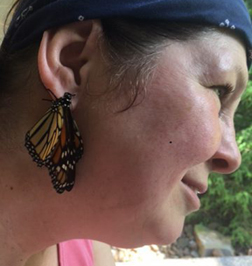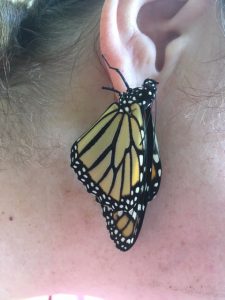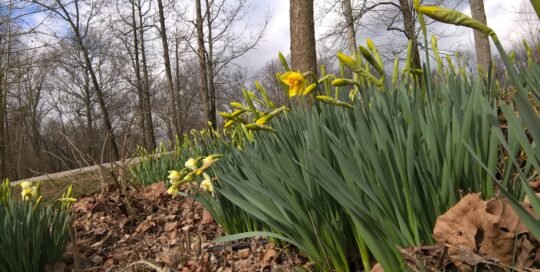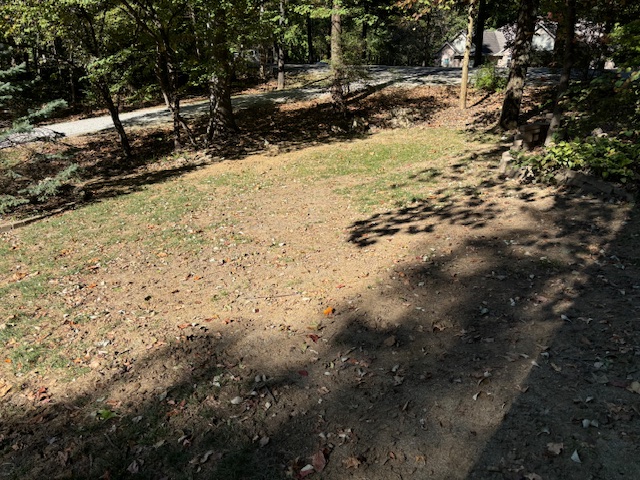Monarch Butterflies and Their Life Stages
Views: 1682



Every once in a while, in the garden, I feel a blessing and witness a miracle. So it was a few weeks ago when I found a Monarch butterfly caterpillar feeding on milkweed plants. I hadn’t found any caterpillars last year and had just about given up on finding any this year. I felt like a little kid at Christmas.
Now, in nature, the chances of a Monarch surviving from egg to butterfly are about 10%. Although the caterpillars eat only milkweed because it gives them a bitter taste and makes them toxic to predators, Monarchs do have natural enemies. They can be eaten by spiders or ants; tachinid flies and braconid wasps will lay their eggs on the caterpillar and their newly hatched larvae will eat the caterpillar from the inside out (YUCK!). Monarchs also die from infected wounds, stress and thermal shock (too hot or too cold).
Since Monarch populations have dramatically declined, there has been a nation-wide effort to help them recover and survive. Many gardeners have planted milkweed varieties in their gardens to feed the caterpillars and grow native flowers to provide nectar for the adults. We won’t use insecticides or herbicides around our gardens either.
Saving the caterpillar
When I found the caterpillar, I very carefully picked the milkweed leaf it was on; went inside the house and fetched the plastic critter carrier I keep especially for Monarchs. I gingerly placed the leaf with the caterpillar still munching away in the cage and went back out to get more fresh milkweed leaves for it to eat. Basically, caterpillars do three things: eat, poop and grow…it didn’t seem to notice or care that it’s surroundings had changed.
Every morning and every evening I checked on “Junior”, cleaning his cage and provided fresh, tender milkweed leaves. Junior just kept on eating, pooping and growing. After three days, Junior was hanging from the roof of the cage, in the familiar “J” shape, which meant he was ready to be a chrysalis. A beautiful, sea-green capsule decorated with bright, metallic gold spots greeted me the next morning. It took Junior eleven days to re-arrange himself into a Monarch butterfly. It happened on a Sunday so, I got to see him just after he had emerged, his wings still curled, wet and floppy; incapable of flight. This is the time a Monarch is the most vulnerable; his bright colors attract attention, but he has no way to escape a hungry bird.
Letting him go
I took the cage outside, picked him up by the chrysalis to which he was clinging and held him in my open palm. He started walking slowly up my wrist, forearm, upper arm, shoulder, then around the back of my neck, then up my neck and onto my ear. This was a very tickly experience but I didn’t dare move for fear of hurting him.
Junior stayed on my ear for at least two hours; Wonderful Husband brought me a hand mirror and a glass of water and I just sat there on the garden bench, occasionally checking Junior in the mirror to see what progress he was making.
For two hours, I did nothing but feel the sun, enjoy the breeze, listen to the bird songs and rustling leaves and watch the birds and butterflies. For two whole hours, I just appreciated this beautiful world and did not feel any guilt or urge to be busy. I was working to midwife a Monarch, which was much more important.
When Junior finally flew away on his maiden flight, I gave him a quiet blessing and wished him Godspeed.
Stay Green, good friends!
Meet Dona Bergman
Dona Bergman is a founding member, Southwest Indiana Chapter of the Indiana Native Plant & Wildlife Society, and an Advanced Master Gardener.







